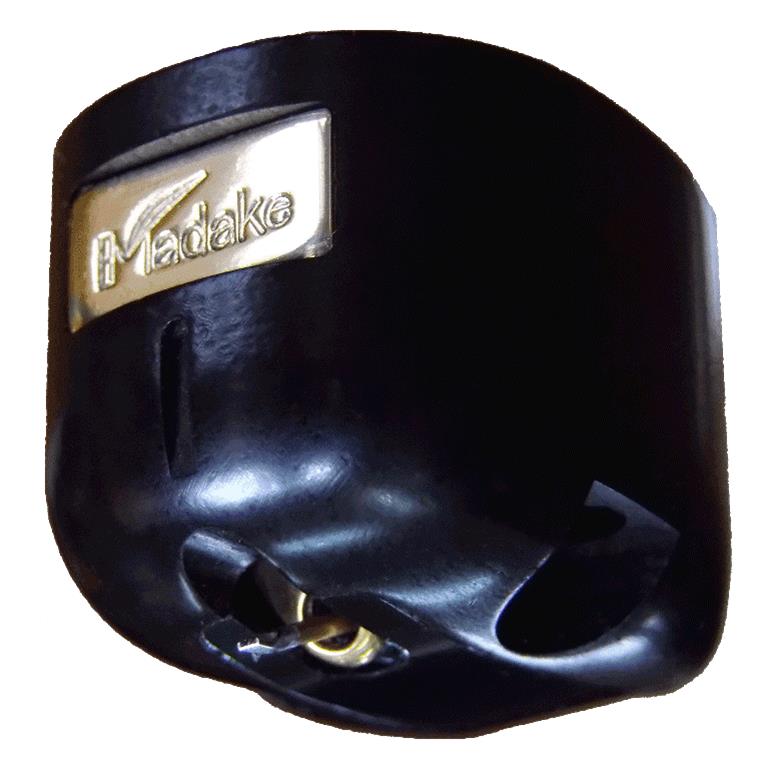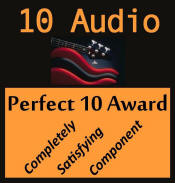Let’s start this review by taking a step back in time and having a look at my 2011 review of the Miyajima Kansui phono cartridge. The Kansui has been my main phono cartridge since before that review was posted. Using that “10 LP” review as a starting point, the new Madake, $5,895, is better. While the Kansui was a significant upgrade over the lower cost Shilabe, the Madake is not quite as large a step above the Kansui. However, it is still a meaningful and worthwhile and “no going back” step closer to the real deal.

Review components include a Basis 2500 Signature turntable with Vector 4 tonearm, Mark Levinson No. 52 preamplifier with its excellent built-in phono preamplifier, and a Sutherland Duo phono preamplifier often used with a DIY Sowter 1990z step-up transformer or Bob’s Devices 1131 step-up transformer, and various downstream gear.
This cartridge seems to break most of our accepted rules about resistive loading. The standard explanation for needing any resistive loading for a moving coil phono cartridge is to eliminate ringing or overshoot which is distortion in the frequency response. A general guideline has been to use a load value of about 10-20 times the DC resistance (DCR) of the cartridge’s coils. If this is correct, then the Madake represents a quantum leap forward in phono cartridge design. In my earlier experiences with Koetsu cartridges, a value of precisely 20 times the Koetsu’s 5 Ohm DCR was best. (The 100 Ohm loading option you see on all phono preamps is a Koetsu legacy.) Even a one or two Ohm difference was noticeable, and noticeably not optimum. The Kansui worked well with 300 Ohms loading, or about 18 times its 16 Ohm DCR. But when the Madake is feeding its signal into the Levinson’s phono stage, the best sounding load value is 20,000 Ohms! This is 1,250 times the DCR of the cartridge! With this preamplifier at this load value, the high frequency resolution and “air” is shockingly real sounding and easily the best that this listener has ever heard from recorded music. Curiously, the Sutherland Duo seemed to prefer 1,000 Ohms using the cartridge straight in, and about 800 Ohms – I am still playing with different value resistors – with the Sowter step up transformers.
Clearly, the best load value is the one that sounds best in your system, with the advice to try higher than “normal” values due to the Madake’s significantly reduced propensity to ring. Keep increasing the value, for example from 500 Ohms to 1,000 Ohms, until the treble becomes edgy or harsh and then reduce until the harshness is gone. You will find that the better the recording, the higher the value can be before it becomes abrasive sounding. So the final value will necessarily be a compromise to accommodate those not-so-great recordings which we all have in our LP collections. This anomaly is not specific to the Madake but is common with all moving coil cartridges.
As with most phono cartridges, break-in is essential. At about 25 hours of use, the sound is not bad overall, but there is a coarse overlay. At 50 hours, the sound is smoothing out and becoming better, with much improved bass definition. 200-250 hours should get you a fully broken-in Madake. The Cardas Frequency Sweep and Burn-In Record, with its locked grooves of white noise, is well worth the investment to speed the break-in process and save you long hours of playing records solely for the purpose of breaking in a new phono cartridge.
The main area of improvement is in the upper frequencies. If you are a fan of “air”, openness and extremely natural resolution in the treble, you will love the Madake. I do. I had a Clearaudio Goldfinger several years ago and recall that it also had that feeling of openness and resolution, but at the cost of a clinical, dry character. The Madake is never dry or threadbare sounding, instead offering the full harmonics of every sound that extends into the upper frequencies. The long-lasting fading trail of sound from a bell, or cymbal, or triangle, or similar instrument will leave you astonished that this level of detail and micro-resolution has been hiding, unheard or muted, in your music collection.
There are also improvements in the lower frequencies compared to the Kansui, although relatively smaller. The midrange, where most human voices live and breathe, is wonderfully rich and satisfying. The bass is also a bit better defined and with greater power and impact. The one criticism is the need to install the cartridge bolts up from the bottom of the cartridge and secure the nuts on top of the headshell. I much prefer having the nuts permanently affixed to the cartridge body and installing the bolts pointing down, not up.
The perception of a more tangible sound stage, with real musicians performing in 3-dimensional space, is very involving. Please let me emphasize that the Kansui continues to provide very musical and satisfying performances. It is just that the Madake offers better insight into the original acoustic space that the performers occupied when the recording was made. This also improves the believability of the performers occupying that space and our enjoyment and immersion in the entire musical performance. If you are not sitting forward in dumbstruck awe with your open mouth hanging down towards the floor, then you will be sitting back with a huge smile on your face with the realization that you have succeeded in putting together a very good sounding audio system.
You get the idea. If you have already invested in a Miyajima Shilabe or Kansui, you have an excellent cartridge. If you decide to install a Miyajima Madake phono cartridge, it will be a worthwhile upgrade. No doubt. And no regrets.
Overall Rating: 10 LPs

Link to manufacturer’s Web site: Miyajima Laboratory
Link to US Distributor: Robyatt Audio Products
